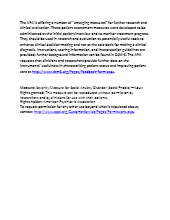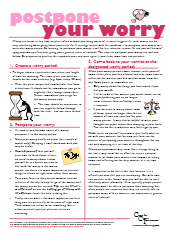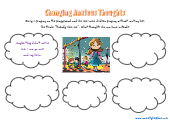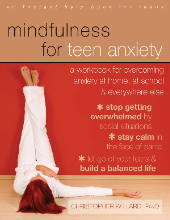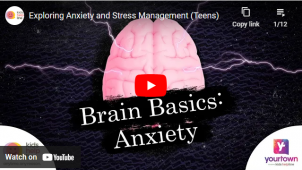 The “How to Address Excessive Reassurance Seeking in Children” guide is an invaluable resource for parents dealing with children who frequently seek reassurance as a way to manage their anxiety. This guide provides practical strategies to help children develop healthier coping mechanisms and foster greater independence.
The “How to Address Excessive Reassurance Seeking in Children” guide is an invaluable resource for parents dealing with children who frequently seek reassurance as a way to manage their anxiety. This guide provides practical strategies to help children develop healthier coping mechanisms and foster greater independence.
This guide explains excessive reassurance seeking, a behaviour where children repeatedly ask for confirmation or assurance about their worries. While seeking reassurance is a natural response to anxiety, it can become problematic when it becomes a constant need, preventing children from learning to manage their anxiety independently.
This resource is designed for parents, guardians, and caregivers of children who exhibit excessive reassurance-seeking behaviours. It is also useful for teachers and mental health professionals working with anxious children and teenagers.
How It Can Be Used:
-
Understand the Problem: The guide starts by explaining what excessive reassurance seeking is and why it is problematic. Parents learn how constant reassurance can become a temporary fix that perpetuates anxiety in the long term.
-
Make a Clear Plan: Parents are encouraged to develop a clear plan to address reassurance seeking. This involves identifying specific behaviours to change, ensuring all family members are on board, and explaining the plan to the child in a calm and supportive manner.
-
Implement the Plan: The guide provides practical steps to follow when the child seeks reassurance. Parents are advised to use responses that encourage the child to think independently, such as “You already know the answer to that question,” or “What do you think?”
-
Consistency is Key: The guide emphasises the importance of consistency. Parents must resist giving reassurance every time to prevent reinforcing the behaviour. Instead, they should focus on ignoring the reassurance-seeking behaviour while praising any efforts the child makes to cope independently.
-
Praise and Encouragement: Positive reinforcement is crucial. Parents are encouraged to praise their child for attempting to manage anxiety on their own, reinforcing their confidence and independence.
-
Dealing with Initial Resistance: The guide prepares parents for the initial increase in anxiety or frustration their child may exhibit when reassurance is withheld. It is important to remain consistent and supportive during this period.
Overall, this guide is an essential tool for any parent looking to help their child develop resilience and self-reliance in the face of anxiety.
FREE PDF DOWNLOAD OF HOW TO ADDRESS EXCESSIVE REASSURANCE SEEKING IN CHILDREN – GUIDE FOR PARENTS


